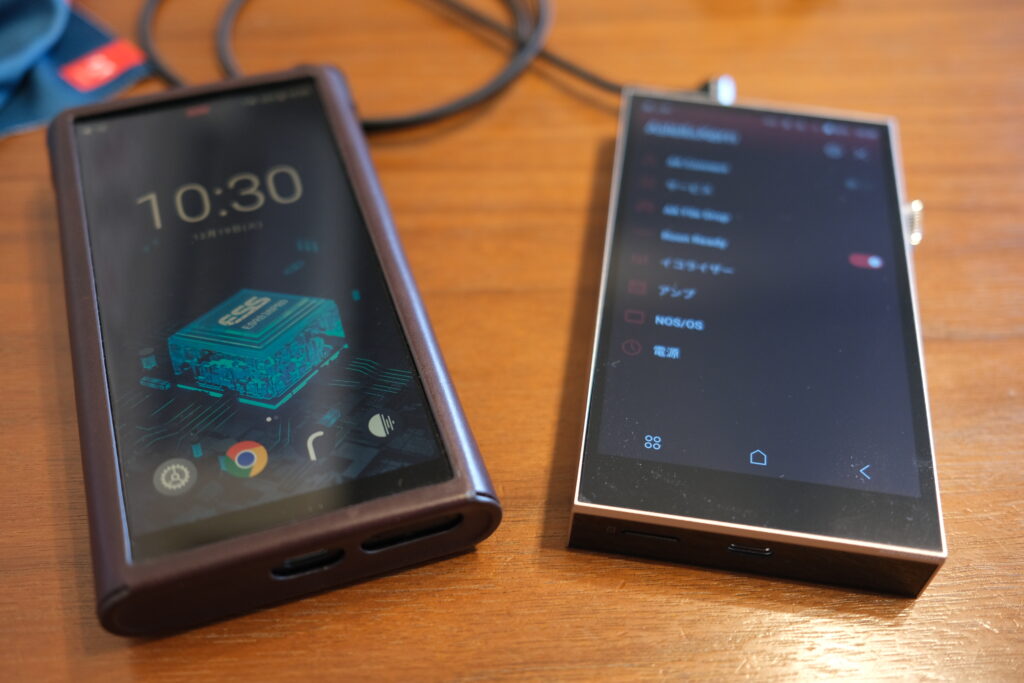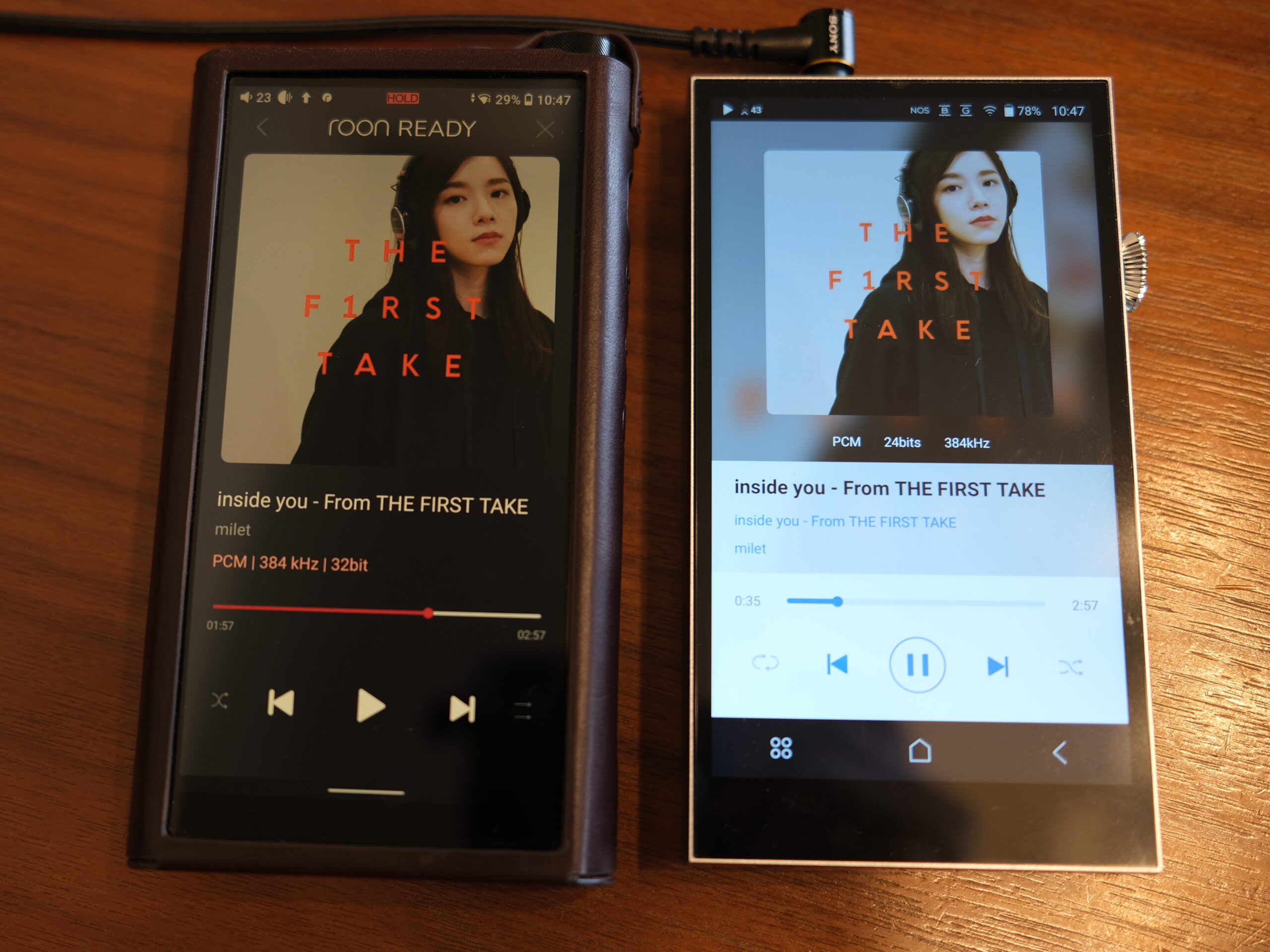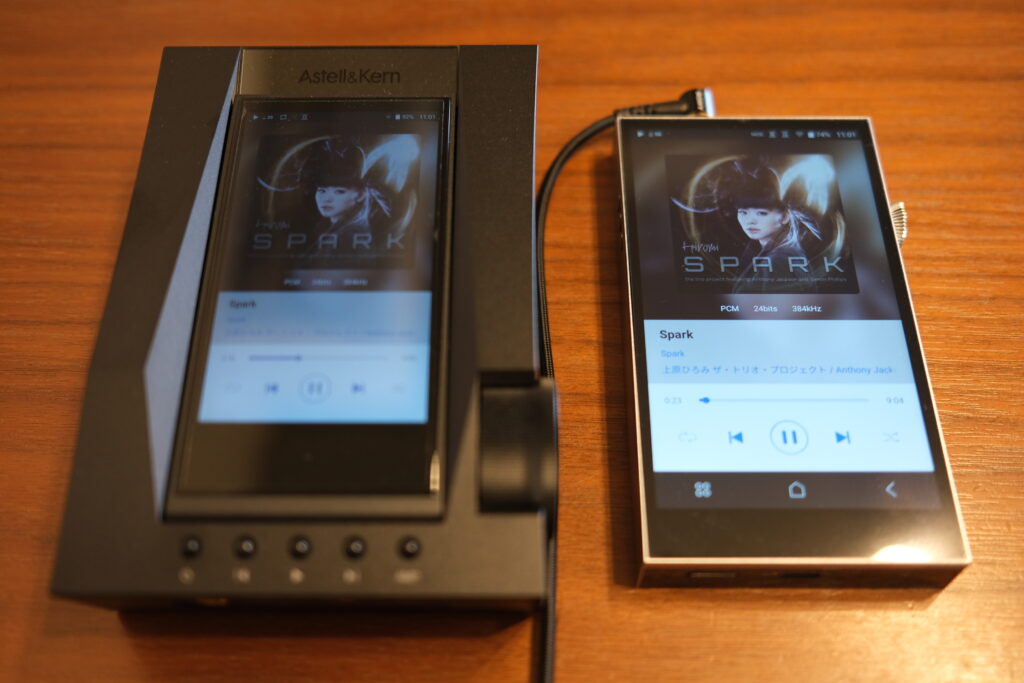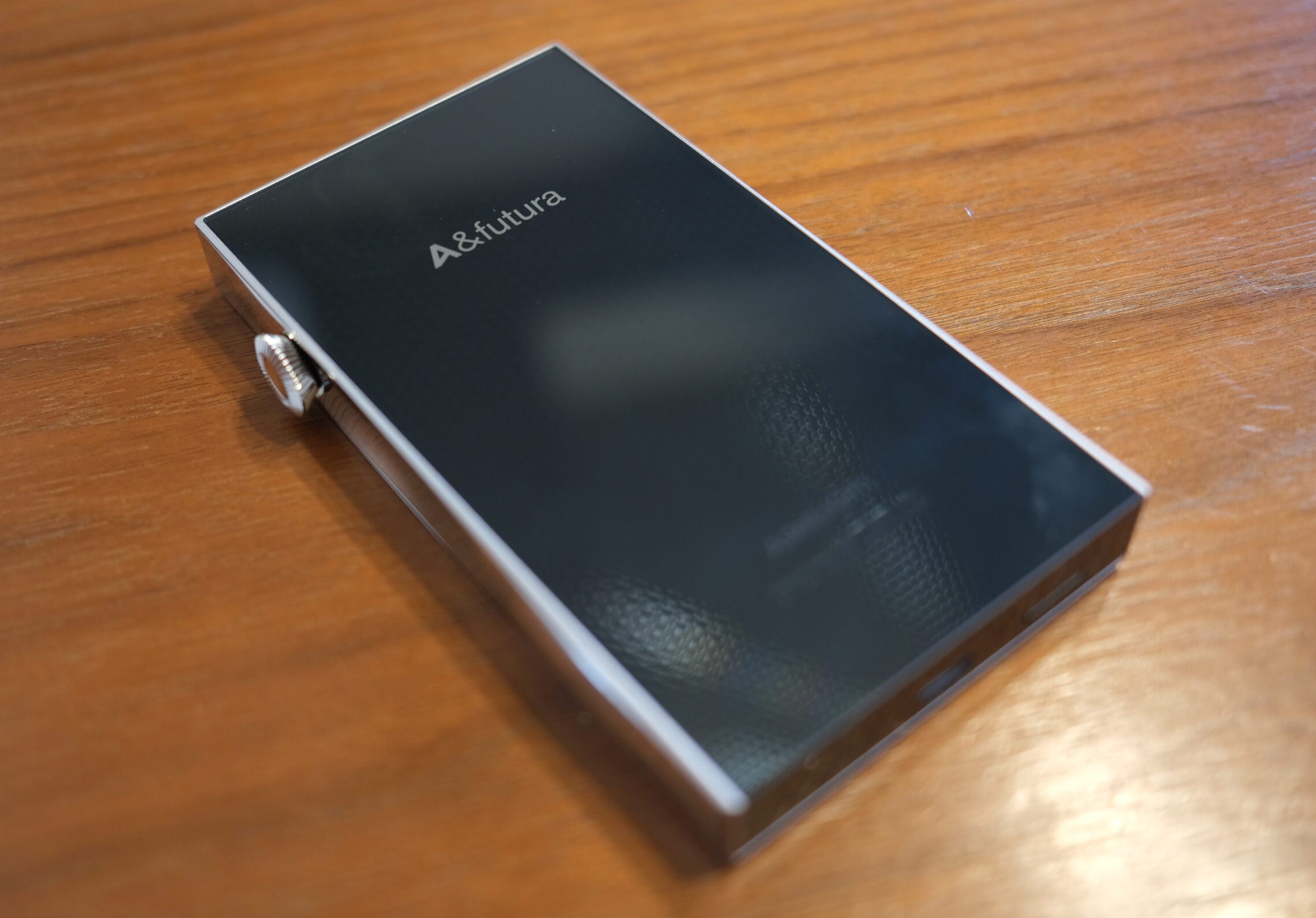Comparison

First, a comparison with the Fiio M15S. The AK model has decreased in price (on sale), while the Fiio model has increased, bringing their prices closer together, so I decided to compare these two rival models. I used the Sony IER-M9 headphones with a balanced cable. Music playback was done not from internal storage but through Roon with maximum upsampling (SE300 at 384kHz, 24-bit in NOS mode; M15S at 384kHz, 32-bit).
【Track : Spark, Hiromi the trio project】
- SE300 NOS&Class A
The intro’s synth pad feels thick. The resolution is adequate, but the sound tends to be somewhat centered, giving a kind of a sonic block. The resonance of the floor tom has a sense of realism, almost as if you can see the vibrations of the drumhead. - SE300 NOS&Class AB
The soundstage expands in all directions—up, down, left, and right—creating a much wider space. When focusing on the individual sounds of the instruments, Class A reveals more detail and is impressive in that regard, but when listening to the ensemble as a whole, the wider soundstage makes Class AB sound sharper, more precise, and gives a modern tone. Personally, I prefer the NOS AB. - M15S
Due to the performance of the DAC chip, M15S upsamples to 32-bit, but compared to the SE300, it has a slightly more subdued or veiled sound, with greater ambiguity. That said, it is closer to the NOS & Class AB configuration than the NOS & Class A configuration of the SE300.
【Track:milet, Inside you】
A self-cover of milet’s first single. The performance consists solely of vocals and acoustic guitar.

- M15S
The vocals take center stage with a strong presence, while the acoustic guitar sits just a step behind. At times, the vocals are so forward that they can feel a bit overwhelming. - SE300 NOS&Class AB
The clarity is better than the M15S, but the harshness of the vocal is softened. - SE300 NOS&Class A
The vocals become even softer and much more pleasant to listen to. The presence of the acoustic guitar is also more pronounced; while it seemed like a supporting role with the M15S, in the NOS & Class AB combination, it has become an equal collaborator. For this track, I prefer the NOS & Class A.
As mentioned above, the SE300 is a rare device that can cahnge its playback style to suit music. What’s particularly noteworthy is how seamlessly you can switch between NOS(Non Over Sampling) and OS(Over Sampling), and between Class A and Class AB modes with just a touch. The sound differences are easy to discern, allowing you to adjust the settings to match various genres of music without any waiting or interruptions. It’s also simple to change modes based on your mood. Although it may sound cliché, this is truly impressive.
I also compared it using Tokyo String Quintet, Schubert: String Quintet in C major D.956, 1st movement, and my impression remained unchanged—the SE300 delivers a greater sense of depth and spatial presence in the sound, giving off a luxurious feel that justifies its price.
Both the SE300 and M15S are priced around 200,000 yen, and they undeniably offer a listening experience that stands apart from smartphone playback or lower-priced devices. At this level, the so-called “resolution” is more than adequate, with almost no sounds getting completely buried. As you shift your focus to different parts of the music, you can hear every sound packed into the track. In that sense, the technical specifications of these devices are more than sufficient for attentive listening.
However, it’s clear that the subtle differences in details and the craftsmanship behind each device influence how you perceive music when you “listen.” As a hobby, this is something worth pursuing—it’s incredibly fascinating and never gets boring.
Next, I compared the SE300 with the CA1000T, both from AK.

【Track : Spark, Hiromi the trio project】
Honestly, it’s hard to pick a clear winner between the two, as they have somewhat similar characteristics. The CA1000T has a high-resolution DAC with a subtle touch of vacuum tube warmth, which I really like. The separation of sounds is slightly better in the CA1000T. However, when it comes to overall openness and soundstage, the SE300 takes the lead.
What I distinctly felt was the expressiveness from the midrange to the bass. The SE300 gave me chills with the sweeping synth pad in the introduction.
【Track : milet, Inside you (The First Take)】
The vocal sharpness is somewhere between the SE300 and the M15S. My impression is similar to that I felt from Hiromi’s Spark; the resolution and sound separation are top-notch. However, if I had to choose one, I would definitely lean toward the SE300.
Overall, I really like the SE300 and love it. However, a significant drawback is that the battery drains quite quickly during Class A playback. Additionally, since it’s not Android-based, you can’t install Roon Remote, which means you need a separate device for remote control. I wish the SE300 could support Roon Arc like SP3000 and KANN ULTRA.



コメント